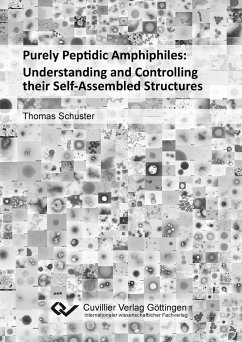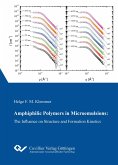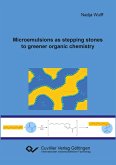Amphiphilic molecules spontaneously self-assemble into a variety of structures in solution. The term amphiphilic indicates that one part of the molecule is attracted to the solvent, while the other is not. Interactions such as between solute-solvent and solute-solute thus determine the organization. Understanding the self-assembly means understanding those interactions and their driving forces. In the first chapter an overview of the self-organization of amphiphilic molecules into supermolecuar aggregates of different morphologies is provided, with a focus on purely peptidic amphiphiles, i.e. amphiphiles which consist solely of a different amino acid sequence. In the second chapter the self-assembly of amphiphilic peptides with a specific amino acid sequence into micelles and spherical peptide nanoparticles is described. The undecamer peptide that was used features a repetitive L-tryptophan and D-leucine [LW-DL] motif, representing the hydrophobic block ¿ which is a truncated version of gramicidin A (gA), named gT. The N-terminally attached hydrophilic section was either lysine (K) or acetylated lysine (X) and was optionally terminated with cysteine for post-functionalization of the thiol-group. The uncharged peptide AcC-X3-gT was demonstrated to assemble into micelles and subsequently into peptide particles, termed ¿peptide beads¿. We hypothesize that the peptide beads consisted of micelles ¿ a structure described as multicompartment micelles. Peptide beads using AcC-X3-gT and its analogues ¿ including Ac-X3-gT-C, a new peptide with the cysteine residue on the C instead of the N-terminus ¿ are further investigated in Chapter Three. We succeeded in creating highly ordered Ac-X3-gT-C ¿ Au-NP composites, which allowed us to visualize the inner structure of the nanoparticles. The presented composite materials are expected to exhibit exceptional electrical and optical properties.
Hinweis: Dieser Artikel kann nur an eine deutsche Lieferadresse ausgeliefert werden.
Hinweis: Dieser Artikel kann nur an eine deutsche Lieferadresse ausgeliefert werden.








